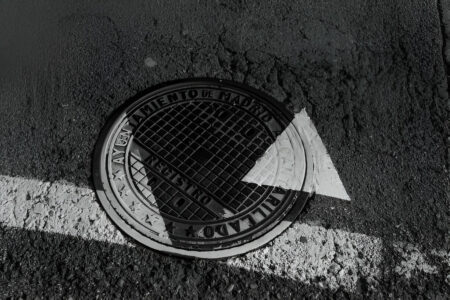Blocked drains on roads are more than just a nuisance; they can lead to significant problems if not addressed promptly. Proper drainage systems are crucial for maintaining the integrity of our roads and ensuring the safety and convenience of drivers and pedestrians. Let’s dive into what causes these blockages, how to identify them, and the best ways to deal with and prevent them.
What Causes Blocked Drains on Roads?
Accumulation of Debris
One of the most common causes of blocked drains on roads is the accumulation of debris. Leaves, trash, and other materials can quickly clog drainage systems, especially during the fall or after a storm.
Heavy Rainfall
Heavy rainfall can overwhelm drainage systems, leading to blockages. When the volume of water exceeds the drainage capacity, it often results in pooled water and potential road damage.
Poor Maintenance
Neglecting regular maintenance of drainage systems can lead to blockages. Without routine cleaning, drains can become clogged with silt and other materials over time.
Tree Roots Intrusion
Tree roots can grow into drainage pipes, causing blockages. As roots seek out moisture, they can infiltrate and eventually clog drains, leading to significant disruptions.
Signs of a Blocked Drain
Water Pooling
One of the first signs of a blocked drain is water pooling on the road. This can be dangerous for drivers and pedestrians alike.
Slow Drainage
If water is slow to drain away after rainfall, it is a clear indicator of a blockage in the drainage system.
Unpleasant Odors
Blocked drains often emit foul odors due to the accumulation of organic material and stagnant water.
Visible Debris
Seeing debris around drainage grates or in the water pooling around them can indicate a blockage.
Impact of Blocked Drains on Roads
Road Damage
Blocked drains can cause water to accumulate, leading to potholes and other types of road damage. This not only affects driving conditions but also increases repair costs.
Traffic Disruptions
When drains are blocked, roads can become flooded, causing traffic delays and accidents. This can be particularly problematic in busy urban areas.
Environmental Hazards
Blocked drains can lead to the overflow of contaminated water, which can pollute local water bodies and harm wildlife.
Increased Maintenance Costs
Neglecting to address blocked drains can lead to more significant issues down the line, resulting in higher maintenance and repair costs.
Preventive Measures
Regular Cleaning and Maintenance
Routine cleaning and maintenance of drainage systems can prevent blockages. This includes removing debris and inspecting the condition of the drains.
Installing Proper Drainage Systems
Ensuring that roads are equipped with adequate drainage systems can help manage water flow and prevent blockages.
Public Awareness Campaigns
Educating the public about the importance of keeping drains clear and how they can help can reduce the occurrence of blockages.
Tree Management
Proper management of trees near roadways can prevent roots from infiltrating drainage systems.
Immediate Actions to Take When a Drain is Blocked
Identifying the Blockage Source
The first step in addressing a blocked drain is to identify the source of the blockage. This can involve inspecting the drain and surrounding area.
Using Drain Rods
Drain rods can be used to manually clear blockages. This method is effective for removing debris close to the surface.
High-Pressure Water Jetting
High-pressure water jetting can clear more stubborn blockages. This involves using a powerful stream of water to dislodge and flush away debris.
Contacting Professionals
For severe blockages, it’s best to contact professional drainage services. They have the expertise and equipment to handle complex blockages.
Professional Services for Blocked Drains
When to Call a Professional
If DIY methods fail or if the blockage is severe, it’s time to call a professional. They can provide a more thorough and effective solution.
Types of Services Offered
Professional services can include high-pressure water jetting, CCTV inspections, and comprehensive drain cleaning.
Cost Considerations
The cost of professional services can vary based on the severity of the blockage and the methods used. It’s essential to get a quote before proceeding.
Choosing the Right Service Provider
Look for providers with good reviews and a solid reputation. Ensure they have the necessary equipment and expertise.
DIY Solutions for Minor Blockages
Using Boiling Water
Pouring boiling water down the drain can help dissolve minor blockages caused by grease or soap.
Baking Soda and Vinegar Method
A mixture of baking soda and vinegar can be poured down the drain to help clear minor blockages.
Manual Removal of Debris
If the blockage is near the surface, manually removing debris with a gloved hand can be effective.
Precautions to Take
Always wear gloves and protective gear when dealing with blocked drains to avoid contact with harmful substances.
Legal Responsibilities and Regulations
Municipal Responsibilities
Local municipalities are typically responsible for maintaining public drainage systems. They must ensure drains are clear and functioning.
Homeowner Obligations
Homeowners are responsible for keeping drains on their property clear. This includes ensuring that no debris enters the public drainage system.
Reporting Procedures
Blocked drains should be reported to the local municipality for prompt action. Many areas have dedicated hotlines or online reporting systems.
Penalties for Non-Compliance
Failing to address blocked drains can result in fines or other penalties. It’s crucial to comply with local regulations.
Technological Advances in Drainage Solutions
Smart Drainage Systems
Smart drainage systems equipped with sensors can provide real-time monitoring and alert authorities to potential blockages.
Real-Time Monitoring
Technologies that offer real-time monitoring of drainage systems can help in early detection and prevention of blockages.
Eco-Friendly Solutions
Eco-friendly solutions, such as permeable pavements and green infrastructure, can help manage water flow and reduce the risk of blockages.
Conclusion!!
Blocked drains on roads are a significant issue that can lead to various problems, including road damage, traffic disruptions, and environmental hazards. By understanding the causes and signs of blockages, we can take proactive measures to prevent them. Regular maintenance, proper drainage systems, and public awareness are key to keeping our roads safe and functional. Immediate actions, whether DIY or professional, are crucial when blockages occur.







